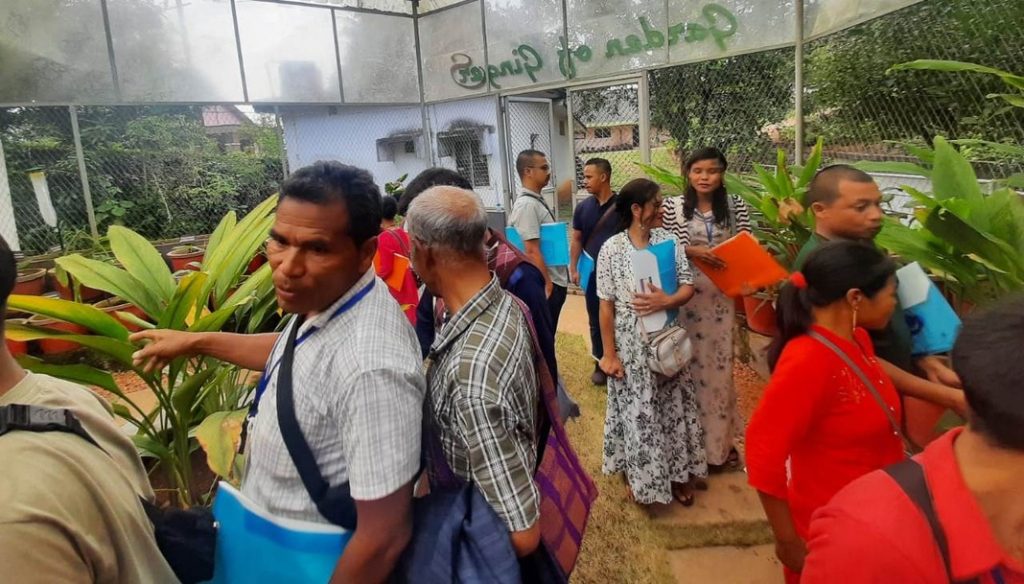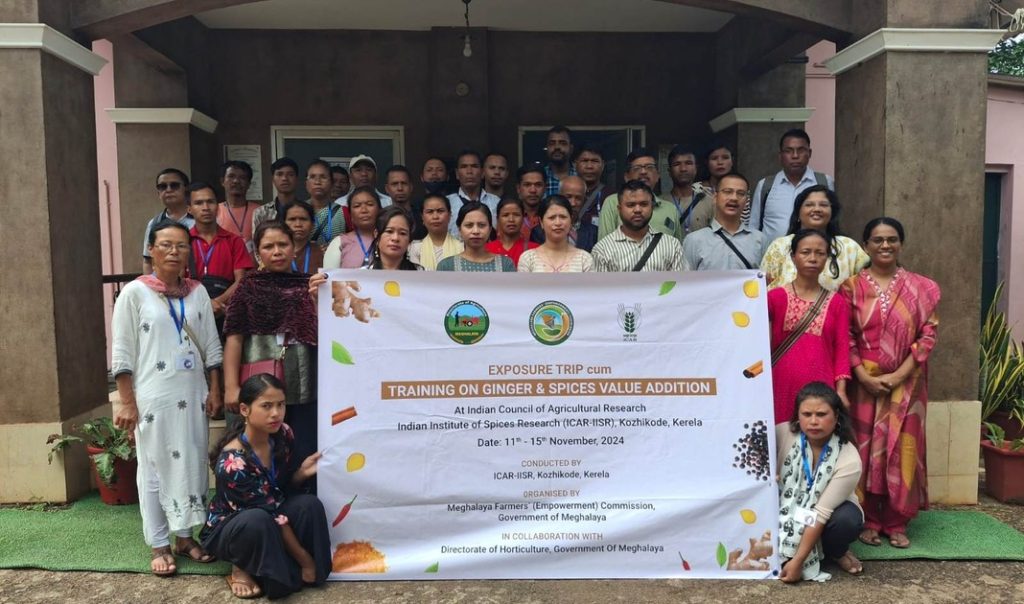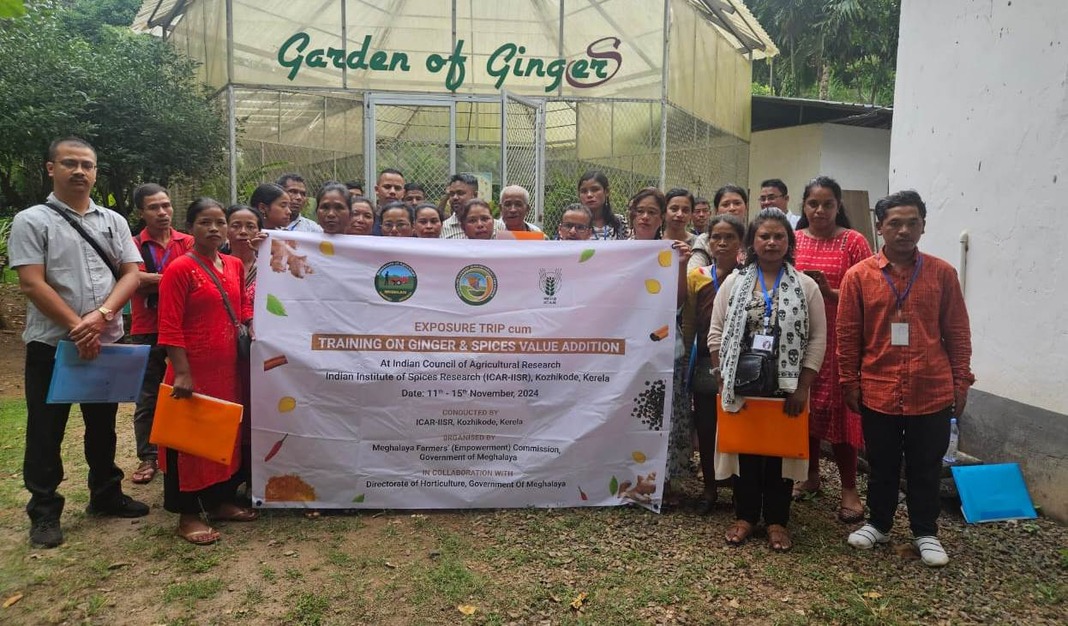ROOPAK GOSWAMI
Shillong, Nov 16: From the “Scotland of the East” to Kerala, the “Spice Garden of India,” it has been a truly “spicy” trip for Meghalaya’s farmers.
26 ginger farmers of the Khasi Jaintia Farmers Association (KJFA) accompanied by 5 officers of the Directorate of Horticulture and 1 biofertilizer entrepreneur from Garo Hills are on a 5 day exposure cum training programme to the ICAR- Indian Institute of Spices Research (ICAR-IISR), Kozhikode, Kerala, to learn about modern techniques of growing ginger, disease management and value addition.
The training which started from November 11 will conclude on the 15th.

Kerala has always been a vital link between the East and the West, facilitating the movement of spices and other valuable commodities. Kozhikode where the ICAR-IISR is headquartered is also a major spice market in the country.
The major objective of the trip is to expose them to new high value spice crops like nutmeg, cloves, true cinnamon, small cardamom, bush pepper which are being introduced in Meghalaya and to the use of innovative biofertilizers through targeted applications methods and bio encapsulation of biofertilizers.
“The visit is organized and supported by the Meghalaya Farmers’ (Empowerment) Commission which had piloted the introduction of these new spices into Meghalaya under a recently signed licensing and collaborative MoU with the ICAR-IISR for capacity building, documentation, classification, research and development of existing and newly introduced spice crops for Meghalaya. It is anticipated that with the learnings and support from the ICAR-IISR, our farmers will be better equipped to cater to the high value spice market” an official of MFEC said.
Spices like nutmeg, cloves, true cinnamon, small cardamom , bush pepper hold potential for lucrative new markets, and the farmers are gaining valuable knowledge on cultivating them effectively.
The program also highlights sustainable practices, offering insights into innovative biofertilizer use. Farmers are learning targeted application methods and exploring bio-encapsulation techniques that boost biofertilizer effectiveness, enhancing soil health and crop yield.

Meghalaya has natural advantages in growing a variety of spices of which the prominent ones are turmeric, ginger, chilli, black-pepper. Meghalaya is known for Lakadong turmeric which gets its name from the tiny village of Lakadong, which is located in the foothills of the Jaintia Hills in Meghalaya, India. Lakadong Turmeric is distinguished by its remarkable curcumin content, ranging from 7 to 12%, in contrast to the 2 to 3% typically found in other turmeric varieties. This heightened curcumin concentration not only enhances the health-promoting and culinary properties of Lakadong turmeric but also positions this organically cultivated strain from Meghalaya as one of the most coveted spices in the region.
An improved variety of pepper IISR Chandra developed by Indian Institute of Spices Research (IISR) is to be introduced in Meghalaya to boost pepper cultivation in the state. The IISR Chandra variety has a higher spike intensity than other varieties. The IISR Chandra variety was developed by crossing two pepper varieties to create a hybrid, and then back-crossing the hybrid with Thommankodiens to retain the desired traits of the parents.




